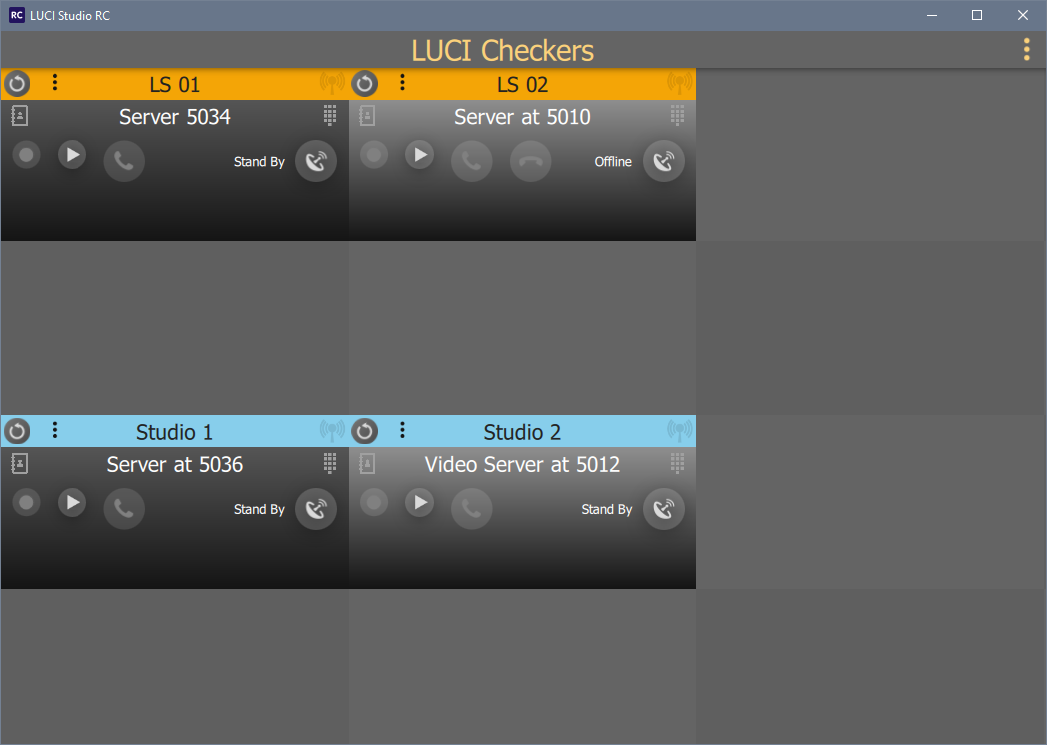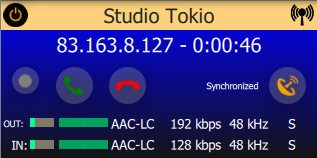Adding LUCI STUDIO instances in LUCI STUDIO RC
At Start, LUCI STUDIO RC will show one Instance tile that tries to connect to a LUCI STUDIO instance on port 9000 on the same computer ( localhost ). Make sure the LUCI STUDIO Manager is running on the computer with the LUCI STUDIO you want to connect to.
If the LUCI STUDIO computer(s) is/are located outside your local network you will need to port forward every incoming TCP traffic on all Ember+ ports to these computers. More info on Port forwarding can be found here.
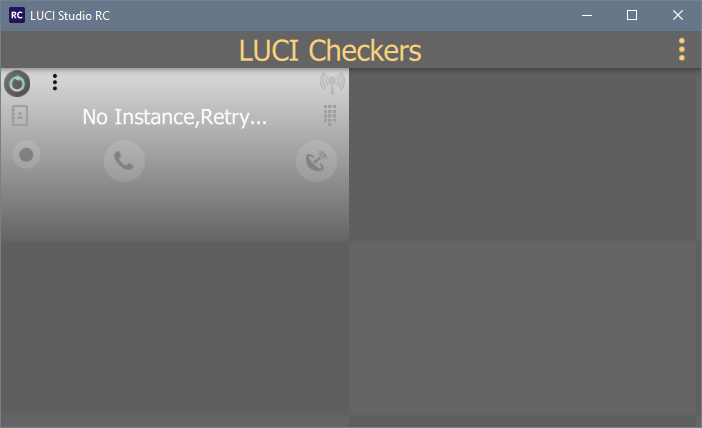
You can change the IP and port number by clicking on the tile . Here you find all settings for this instance, just enter the IP address or URL of the PC running the LUCI STUDIO instance, and the port number of this instance. If you want to leave this tile empty you can select “Empty” for this tile.
If LUCI Studio RC can find the LUCI STUDIO instance all information is automatically displayed and the LUCI STUDIO can be controlled. The Settings Dialog will then show more options: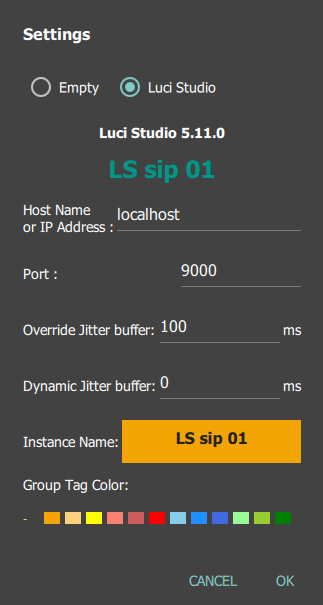
By clicking on an empty tile you can add additional LUCI STUDIO instances that are online, with automatically the same IP but increasing port numbers.
Depending on the Station protocol the tiles can have a different state.
RTP states:
Standby: As a server but not ready to receive a connection, the background is grey, with only the Luci Studio ember name in group tag color, Stations name, the go-online and record button.
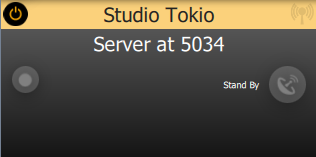
Online waiting: As a server ready to receive a connection, the background is brown, with additional information of the last connection.
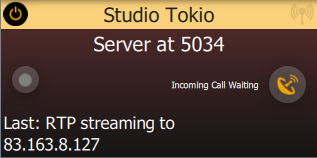
Connected: There is a incoming connection, the background is blue with additional connection streaming information and buttons to mute/unmute outgoing audio
SIP states:
Standby: A not registered SIP station profile, the background is grey, with only the Luci Studio ember name in group tag color, Stations name, the register and record,call and disconnect buttons.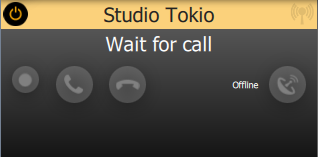
Registered waiting: Ready to receive a connection, the background is brown, with additional information of the last connection.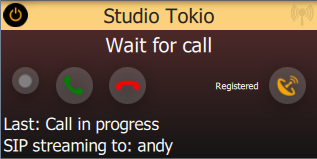
Incoming call : An incoming call request is received, the background is amber, with additional information of callee.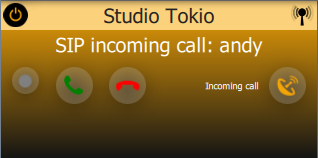
Calling : An outgoing call is made, the background is amber, with additional information.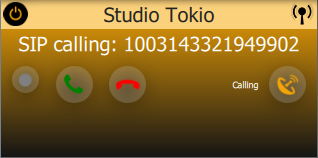
Connected: A SIP connection is in progress, the background is blue with additional connection streaming information.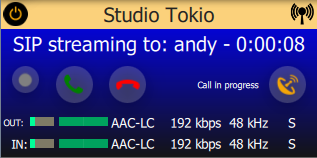
Note: the blue color will turn yellow on bad stream UDP warnings (some dropouts) and even red on UDP errors (data loss).
